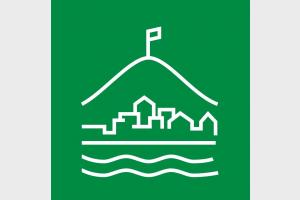In Honour of Domnio's City
Split was never very shy in any kind of celebrations or festivities, but nothing can be compared with celebrating city's patron saint Domnio, or Domnius. City is so well identified with that martyr and bishop from Roman city of Salona, that people in Split ("Splićani") usually call him by more local version of his name Duje. Moreover, over centuries Duje became the Split-most male name. Throughout whole history of Split, Duje became "one of us", even though he was executed more than 17 centuries ago. It's ironic that Domnius is a patron saint of the city founded by Roman emperor Diocletian, his persecutor. Just like in TV sale commercials, there is even more; Emperor's mausoleum was later in history converted into a one of the oldest cathedrals in the world, dedicated to Domnius, among other saints.
Splićani, or Splitizens, call their most important holiday Sudamja. Originally, it was and still is religious, Christian holiday, but it's also of much bigger importance for citizens of Split, almost like the city's birthday. Unfortunately, this year we didn't have an opportunity to celebrate it in a way we like, and we are used to. Sudamja also became one of Corona virus victims, and usual events had to be cancelled, including centuries old procession. Also, instead of celebrating main mass in the Cathedral, faithful could only watch it on TV. Additionally, all popular customs related to this holiday were transferred into a virtual sphere. Instead of people getting together on city's streets, city came to them. They could sing along with tenor Marko Pecotić during his bus-tour concert around neighbourhoods of Split. Pop star Petar Grašo sang to his hometown on beautiful Peristyle Square, and their contributions with online activities gave many museums, artists, or simply people in love with Split and its heritage. And once when all this pass, Sudamja will be back the same as we always celebrated it.
Who really is Saint Domnio, and what does he mean in Split's history? He was born in Syria, and during the Diocletian's bloody anti-Christian spree became a bishop in Salona, a capital of the Roman province Dalmatia. Those were the years of building of Diocletian's Palace on the nearby peninsula which will later become Split. An emperor Diocletian himself ordered Domnio's arrest in AD 304. According to a legend, when bishop revived a death man in front of the imperial officer Marcus Aurelius Iunius, he was executed along with other martyrs in the Salona's amphitheatre, and buried at Manastirine cemetery outside of the city walls. His grave soon became a place of worship, even with a Diocletian living practically next door after he retired into a newly built Palace. It probably seemed to emperor that everything will remain like that for a thousand years, but history went other direction. In 7th century Domnio's remains were transferred to Split, and former mausoleum of the emperor who got him killed was turned into a cathedral.
Indeed, history can be ironic sometime. It's just the same ironic that today's Split draws its identity from the heritage of two mortal enemies, Diocletian and Domnio. The first of them experienced fate he meant for the other one, and today we even don't know where is his grave. On the one side, if there wasn't Diocletian most probably there wouldn't be Split either. On the other, if there was no worshipping of Domnio, Split probably wouldn't be as the one we know.











